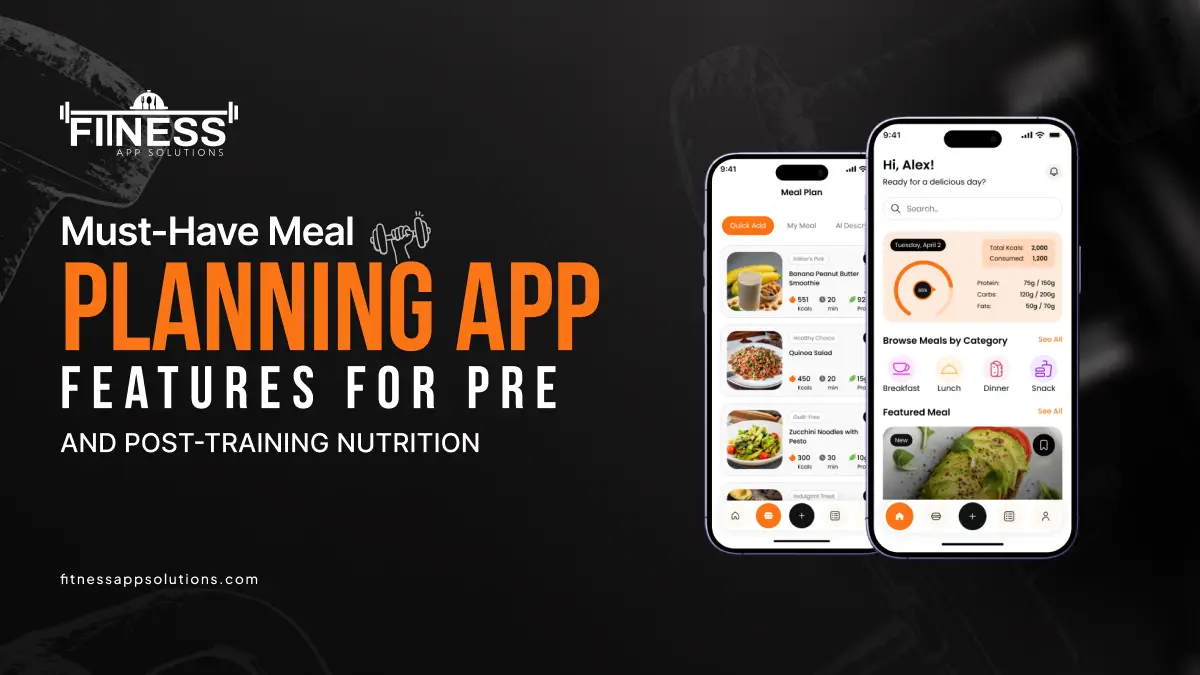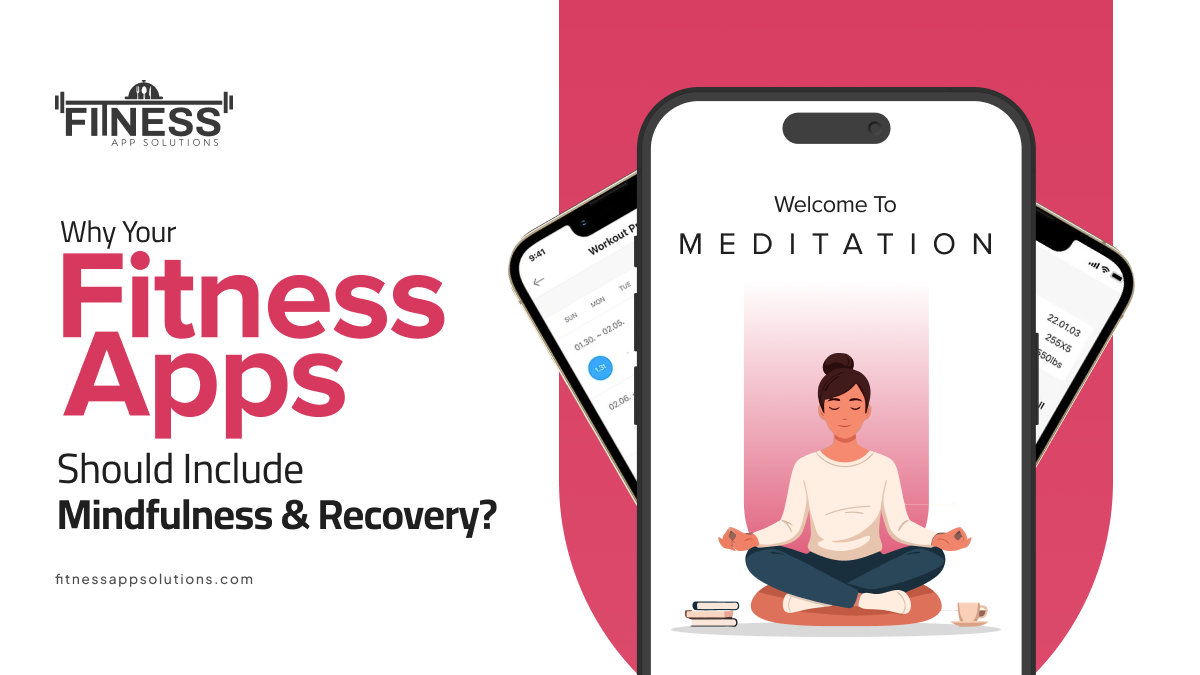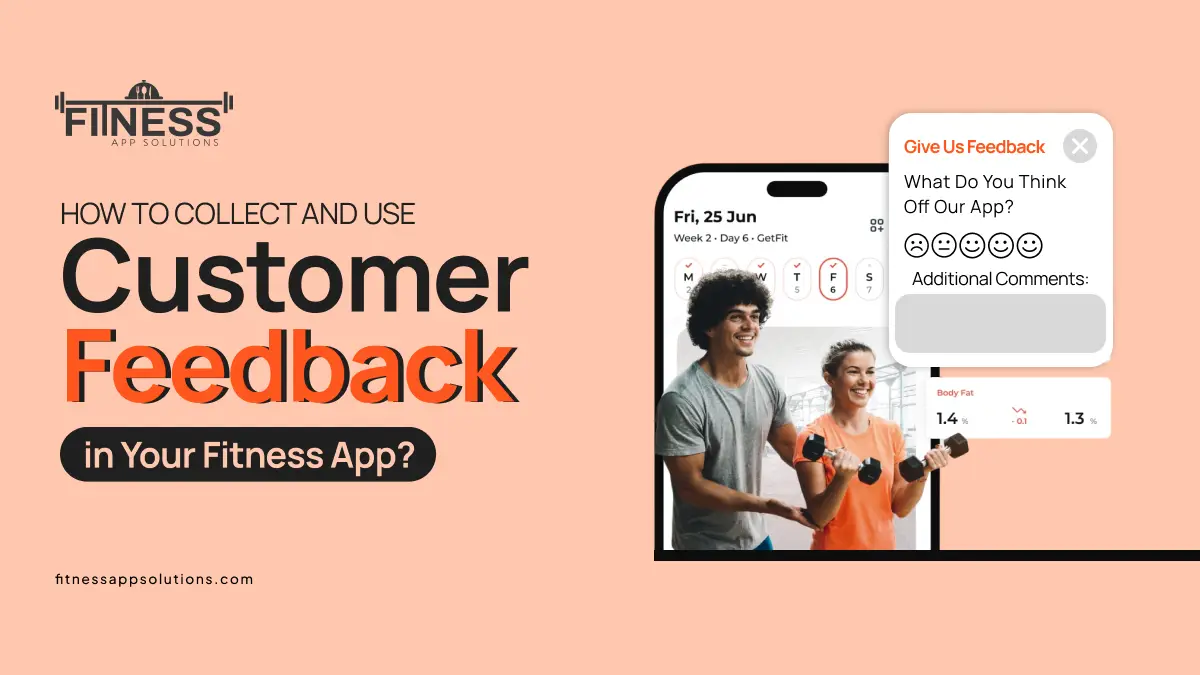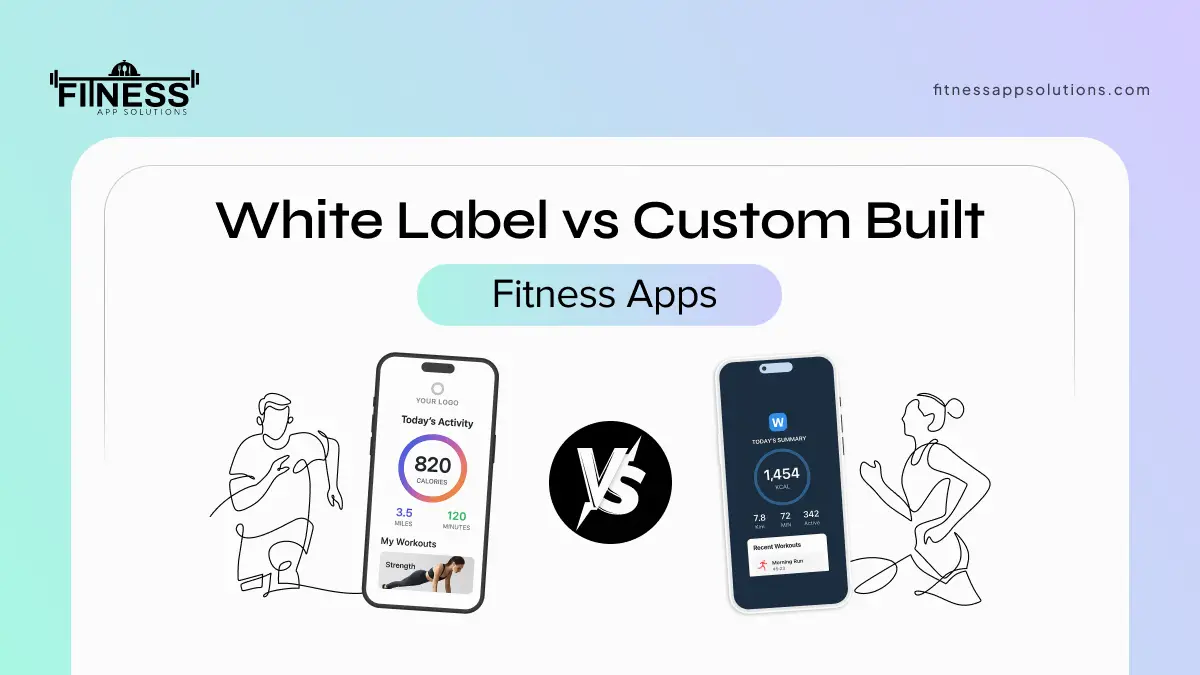Many people face the challenge of maintaining a balanced diet amid their hectic schedules. This is where meal plan apps come into highlight. These digital tools have revolutionized how we approach food, nutrition, and wellness by making meal preparation easier, more personalized, and more efficient.
If you have ever wondered what makes a meal planning app truly effective or what features you should look for, this guide will walk you through everything you need to know. Whether you are a health enthusiast, a nutrition professional, or someone simply looking to eat better, understanding the core elements of these apps can help you make smarter choices.
Why Meal Planning Apps Are Gaining Popularity?
Meal planning apps have become increasingly popular because they address several common pain points related to diet and nutrition. The global market size of the meal plan app market is projected to reach USD 938.6 million by 2030, growing at a CAGR of 17.2%.
- Time-Saving: Planning meals ahead reduces the daily stress of deciding what to cook.
- Health-focused: They encourage healthier eating habits by providing balanced, nutrient-rich meal options.
- Cost-effective: By organizing grocery shopping and reducing food waste, users can save money.
- Personalized: These apps cater to individual dietary needs, preferences, and goals.
- Motivation: Tracking progress and setting goals helps users stay committed to their health journey.
With these benefits, meal planning apps are becoming an essential part of many people’s wellness routines.
What are the Key Features That Make Meal Planning Apps Stand Out?
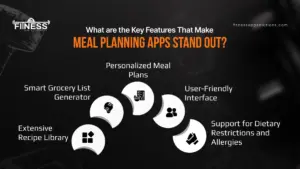
Not all meal planning apps are created equal. The most successful ones have a set of core features that enhance user experience and deliver real value. Here’s a breakdown of what to look for:
1. Extensive Recipe Library
A rich and diverse recipe collection is the heart of any meal planning app. Users want access to a variety of meals that suit different tastes and dietary needs. The best apps offer:
- Recipes for all meals of the day, including snacks and desserts.
- Detailed nutritional information for each recipe.
- Options to save favourites and create personalized cookbooks.
- Filters to find recipes based on ingredients, cuisine, or dietary restrictions.
This variety keeps meal planning exciting and helps users stick to their nutrition goals.
2. Smart Grocery List Generator
One of the biggest hassles in meal planning is grocery shopping. The most effective apps simplify this by automatically generating shopping lists based on the week’s meal plan. Features often include:
- Categorizing items by store sections for efficient shopping.
- Allowing users to add or remove items manually.
- Barcode scanning to quickly add products.
- Reminders to shop or restock essentials.
This feature not only saves time but also helps reduce impulse buys and food waste.
3. Personalized Meal Plans
Personalization is key to making meal planning sustainable. Apps that allow users to tailor meal plans based on their unique needs tend to have higher engagement. This includes:
- Customizing plans for specific diets like vegetarian, keto, or gluten-free.
- Adjusting calorie and macronutrient targets according to fitness goals.
- Offering flexibility to swap meals or skip days without disrupting the plan.
- Taking into account allergies and food intolerances.
By catering to individual preferences, these apps make healthy eating feel achievable and enjoyable.
4. User-Friendly Interface
An intuitive and visually appealing interface can make or break the user experience. The best apps prioritize:
- Easy navigation with clear menus and icons.
- Clean layouts that reduce clutter and confusion.
- Compatibility across devices, including smartphones, tablets, and desktops.
- Accessibility features for users with disabilities.
A smooth user experience encourages consistent use and helps users get the most out of the app.
5. Support for Dietary Restrictions and Allergies
Many people have specific dietary needs due to health conditions or lifestyle choices. Effective meal planning apps provide:
- Filters to exclude allergens or unwanted ingredients.
- Suggestions for ingredient substitutions.
- Educational content about managing dietary restrictions.
- Alerts to avoid cross-contamination or hidden allergens.
- This inclusivity ensures that everyone can find suitable meal options without compromise.
6. Integration with Fitness and Health Tracking
Nutrition and fitness are closely intertwined. Apps that integrate with fitness trackers, apps, or health platforms offer a more holistic approach by:
- Syncing calorie intake with calories burned.
- Tracking macronutrients alongside physical activity.
- Providing progress reports and motivational feedback.
- Allowing users to set and monitor health goals.
This integration helps users see the bigger picture of their wellness journey with fitness and nutrition tracking in one place.
7. Flexible Meal Management
Life is unpredictable, and meal plans need to accommodate that. Top apps allow users to:
- Add or remove meals and snacks on the fly.
- Adjust portion sizes based on hunger or activity levels.
- Save custom meals for future use.
- Skip meals without penalty or disruption.
This flexibility respects users’ lifestyles and encourages long-term adherence.
Additional Features That Enhance the Experience
Beyond the essentials, some apps offer advanced features that add extra value:
- Barcode Scanning: Quickly add grocery items and track nutrition.
- Social Sharing: Share recipes and meal plans with friends or communities.
- Push Notifications: Reminders for mealtimes, hydration, or shopping.
- Offline Access: View meal plans and recipes without internet.
- Educational Content: Articles, tips, and videos about nutrition and wellness.
These extras can make the app more engaging and supportive.
What to Keep in Mind When Choosing or Developing a Meal Planning App?
If you are looking to adopt a meal planning app or develop one, consider the following:
- User Needs: Understand your target audience’s dietary preferences, tech comfort level, and goals.
- Customization: Ensure the app can adapt to various diets and lifestyles.
- Data Accuracy: Nutritional information should be reliable and up to date.
- Privacy and Security: Protect user data, especially health-related information.
- Scalability: The app should be able to handle growing user bases and feature expansions.
- Support and Updates: Regular improvements and customer support enhance user satisfaction.
Balancing these factors will help create or select an app that truly supports healthy living
The Future of Meal Planning Apps
As technology advances, meal planning apps are evolving to become even more intelligent and user centric. Artificial intelligence and machine learning are being used to offer smarter meal recommendations, predict user preferences, and optimize grocery shopping.
Integration with wearable devices and health platforms is becoming seamless, providing a comprehensive view of wellness. Moreover, the focus on sustainability is growing, with apps encouraging eco-friendly food choices and reducing food waste. Social features are also gaining traction, fostering communities that motivate and inspire users.
Conclusion
Meal planning apps have transformed the way we approach nutrition by making healthy eating more accessible, personalized, and manageable. Their success lies in a combination of rich recipe databases, smart grocery management, personalized meal plans, and user-friendly design.
Whether you are a casual user or a health professional, understanding these features can help you make the most of these powerful tools. As these apps continue to evolve, they promise to play an even bigger role in supporting our health and wellness goals. Embracing meal planning technology could be the key to unlocking a healthier, happier lifestyle.
Frequently Asked Questions (FAQs)
Do meal plan apps support different diets?
Yes, they usually offer options for various diets like vegan, keto, gluten-free, and more.
Do these apps help save money?
Yes, by creating accurate grocery lists, they reduce food waste and unnecessary purchases.
Do meal plan apps track nutrition?
Most apps provide detailed calorie and nutrient information for meals and recipes.
Are they safe for people with food allergies?
Yes, many apps let you filter out allergens and suggest ingredient alternatives.
Can they connect with fitness trackers?
Many apps sync with fitness devices to track calories and activity together.
